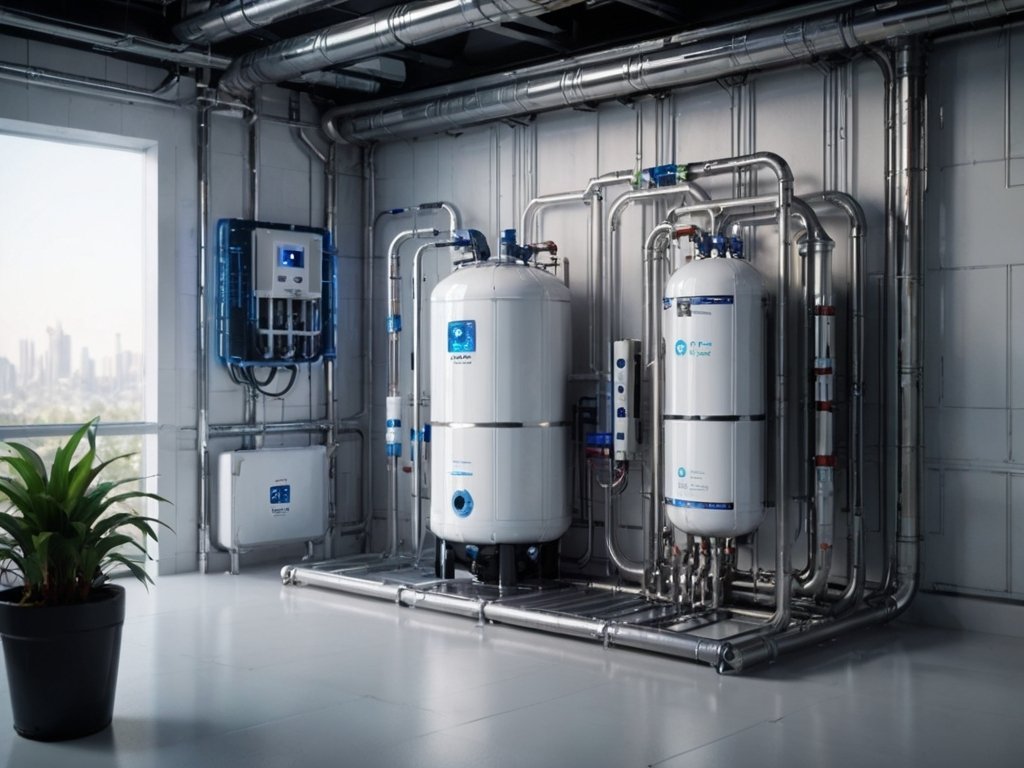Reverse Osmosis Systems: Purifying Water for a Cleaner Future
Reverse Osmosis (RO) systems are advanced water treatment technologies designed to remove contaminants, impurities, and dissolved solids from water by applying pressure to force it through a semi-permeable membrane. Widely used in residential, commercial, industrial, and municipal settings, RO systems play a crucial role in providing safe, clean, and potable water for various purposes, including drinking, cooking, and industrial processes. Let's delve deeper into the components, operating principles, benefits, and challenges of reverse osmosis systems.

Key Components and Operation:
Semi-permeable Membrane:
At the heart of an RO system is the semi-permeable membrane, typically made of thin-film composite (TFC) or cellulose acetate. This membrane allows water molecules to pass through while blocking the passage of dissolved salts, contaminants, and other impurities.
Pressure Pump:
RO systems require a pressure pump to generate the high hydraulic
pressure necessary to overcome the osmotic pressure and force water through the
membrane. This pressure is typically in the range of 100 to 1000 psi (pounds per
square inch), depending on the feedwater quality and desired purity.
Pre-treatment Components:
Prior to reaching the membrane, the feedwater
undergoes pre-treatment processes to remove particulate matter, chlorine, sediment, and other substances that could foul or damage the membrane. Pre-treatment may involve sediment filtration, activated carbon filtration, and water softening.
Post-treatment Components:
After passing through the membrane, the purified
water may undergo post-treatment processes to adjust pH, remineralize, and enhance
taste and odor. Post-treatment may include pH adjustment, remineralization, and
activated carbon filtration.
Advantages of Reverse Osmosis Systems

High Water Purity
Reverse osmosis systems are capable of producing high-purity water by effectively removing dissolved solids, contaminants, and impurities, including bacteria, viruses, heavy metals, and pesticides.
Versatility
RO systems can treat a wide range of feedwater sources, including
brackish water, seawater, groundwater, and municipal tap water. They are versatile and adaptable to various applications, from residential drinking water systems to large-scale industrial processes.

Energy Efficiency
Compared to other water treatment technologies such as distillation, RO systems are relatively energy-efficient, requiring lower energy consumption per unit of water produced.

Space-saving Design
RO systems have a compact footprint, making them suitable for installations where space is limited, such as residential kitchens, commercial
facilities, and mobile water treatment units.

Scalability
RO systems can be easily scaled up or down to meet specific water demand requirements, making them suitable for both small-scale and large-scale applications.
Challenges and Considerations
Membrane Fouling
Membrane fouling, caused by the accumulation of particles, organic matter, and scaling minerals on the membrane surface, can reduce the efficiency and lifespan of RO systems. Regular maintenance, cleaning, and periodic membrane replacement are essential to mitigate fouling issues.
01.
Energy Consumption
While RO systems are energy-efficient compared to
distillation, they still require electricity to operate the pressure pump. Minimizing energy consumption through pump optimization and recovery systems can help reduce operational costs and environmental impact.
02.
Waste Disposal
RO systems produce a concentrated brine stream containing rejected contaminants and dissolved solids, which must be properly disposed of to prevent environmental pollution. Brine disposal methods include dilution, evaporation ponds, and brine treatment technologies.
03.
pH Sensitivity
RO membranes are sensitive to variations in pH, temperature, and
feedwater quality. Maintaining stable operating conditions within the recommended ranges is crucial to ensure optimal membrane performance and longevity.
04.
Conclusion
Reverse Osmosis (RO) systems represent a critical technology for providing clean, safe, and potable water for a wide range of applications. With their high water purity, versatility, energy efficiency, and scalability, RO systems play a vital role in addressing water scarcity, improving public health, and promoting sustainable development. By addressing challenges such as membrane fouling, energy consumption, waste disposal, and pH sensitivity, the continued innovation and implementation of RO systems hold the potential to ensure access to safe drinking water for communities worldwide and contribute to a cleaner and more sustainable future.
